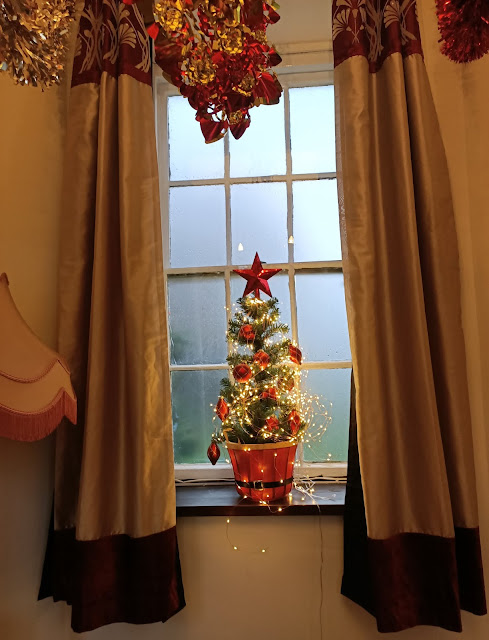First Shoots
We have had some lovely warm spring days in the gardens at
Betley Court at the end of March. The snowdrops have given way to swaths of
daffodils. Celandine, a rather sweet daisy like flower has spread like a rash all
over the formal beds. Whilst it is rather invasive, it has created a bright
flash of colour early in the season. I’ve started to remove some of the annuals
that have appeared, such as Asiatic poppies to make way for the new plants.
The first plants to be are a rather nice pair of bright red
roses, which will climb up the new obelisks in the ‘hot’ borders. I opted for a
variety called ‘Red Flame’, which will bear a classic fairy tale red flower.
It’s got gorgeous bronze stems and leaves. The other bonus with this RHS award
winning variety is that I’m told it has a unique raspberry fragrance. I’ll keep
you updated on whether it lives up to the grower’s promises.
My cost-cutting horticultural measures – the plastic
mini-greenhouse boxes filled with paper flowerpots with seedlings in them - are
coming along well. The south-facing bay window of my Victorian semi is serving
as a makeshift greenhouse for about 120 seedlings for the next few weeks.
Eldest fledgling child’s bedroom window cill has been commandeered for cosmos,
dahlias, sweet peas and sunflowers. Middle fledgling child’s bedroom is
currently the dahlia house, after a very successful session of propagating them
from tubers I pulled up and saved last autumn.
Which brings me neatly on to the subject of propagating
plants. I’ve been struck by the variety of special tricks the gardener has at
their disposal to induce plants to reproduce. Some seeds need light to
germinate; that goes for the alceas (hollyhocks) and English marigolds. Poppies
too need light to germinate. Remember what you were taught at school about the
poppy seeds buried in Flanders battlefields, propelled to the surface of the soil
by wartime explosions, to germinate and produce fields of red flowers we now associate
with fallen soldiers?
Other seeds prefer to be covered in soil, the depth varying
between species. Often the larger seeds like sunflowers and sweet peas are
quite happy to be planted deeper, whilst the finer seeds only require a fine
sifting of compost.
Heat is another great tool at the gardener’s disposal to
coax seeds out of dormancy. I’ve found the ‘bottom heat’ provided by the
central heating radiators under window cills around the house very useful. Correspondingly, cold can also be used to wake
seeds from dormancy. I currently have a bag of compost with pre-soaked Alchemilla
mollis (lady’s mantle) seeds scattered in them, in our fridge on the shelf with
all the sauces on. The idea is this imitate a cold, wet winter, and when I take
them out, the seeds will feel that Spring has arrived. This is useful when
using some packet seeds, just to jolt them into growing, and the technique has
a rather scientific sounding name – stratifying.
The most unusual seed I’ve grown this year has to be the
Indian chestnut tree, or to give it it’s Latin binomial Aesculus indica. We
were gifted a pair of gorgeous black shiny conkers back in the autumn, and I
wasn’t sure we would be able to get anything out of them, but potted them up
and left them in our unheated greenhouse on the allotment over the winter. Suddenly,
about 10 days ago, two shoots about 15 cm high appeared. Yesterday a showing of
bronze leaves had unfurled. The species has long been a favourite in parkland
estates, having been introduced to the UK in the mid 19thcentury.
We
think the pair of Indian chestnut trees will make a fitting addition to the
gardens when they’re big enough!
Make the most of the contrary,Spring weather we're having!
Ladybird Su






So interesting Su! Those conkers look incredible, so pleased they have sprouted for you. I too have a houseful of seedlings, but it's almost all veg - although there are nasturtiums, marigolds and tagetes for companion planting. I love dahlias - hope yours go from strength to strength.
ReplyDeleteIt's your former Spode colleague Ali BTW! :-)
DeleteThe Indian chestnuts are incredible. I follow Kew Gardens, and their Indian chestnuts has THOUSANDS of little saplings where the conkers were left on the ground. I wonder if they give them away?
Delete